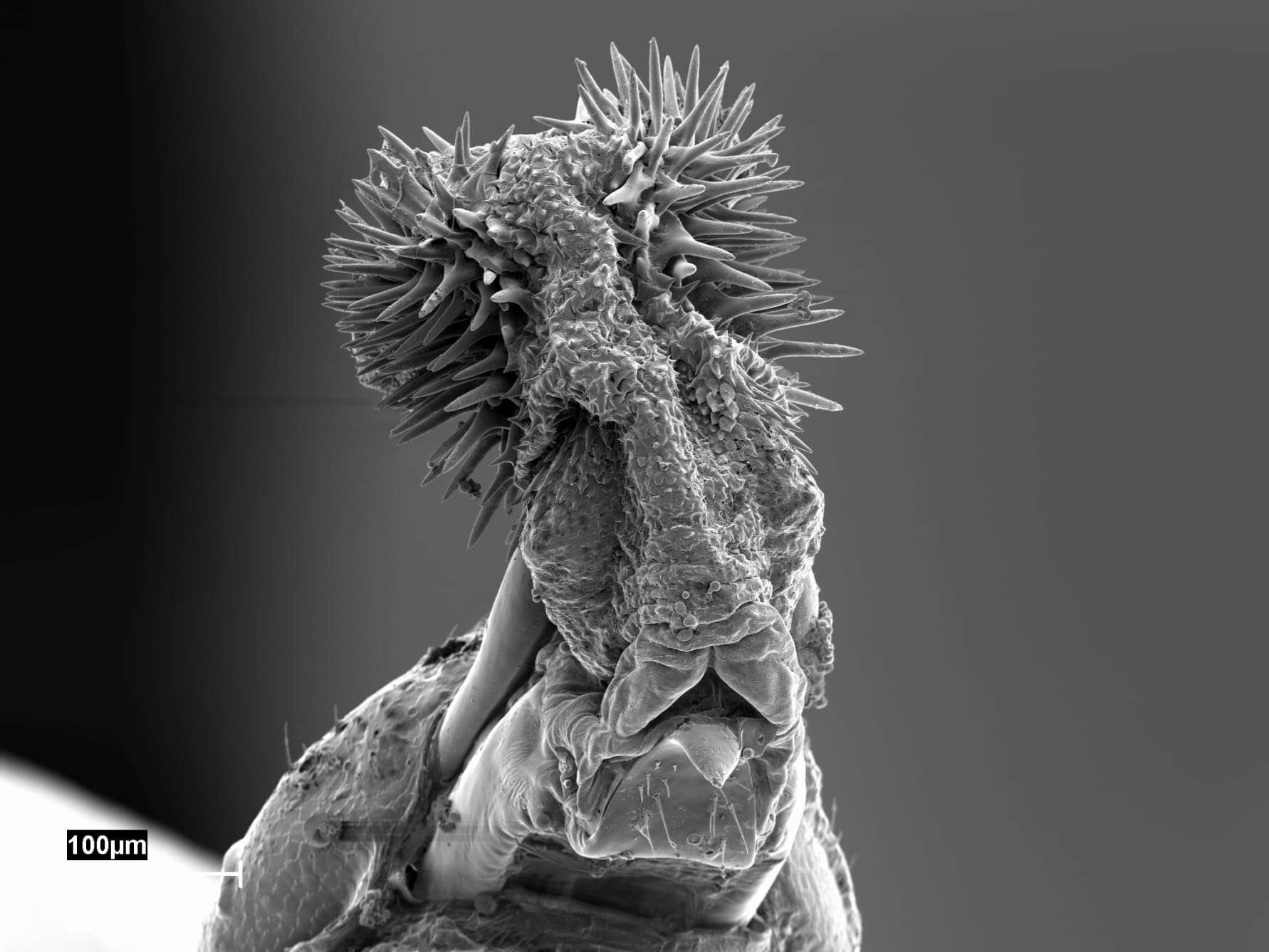Create a free profile to get unlimited access to exclusive videos, sweepstakes, and more!
Male beetle’s huge spiky — ahem — doesn’t seem sexy, but size matters

It looks like a medieval torture device, but what it actually is might be even more shocking. Behold the impressively spiny genitalia of Callosobruchus maculatus.
Male seed beetles’ unmentionables are powerful weapons when it comes to mating and propagating the species. More is more when it comes to what this beetle has between its legs. You’d think it would scare off mates rather than attract them, but females run to, not from, spikes that look more threatening. They have their reasons.
So many questions. What creature would endure this? Why would anything evolve this? Ask animal ecologist Göran Arnqvist of the University of Uppsala in Sweden, who led a study on this recently published in Proceedings of the Royal Society B. As he found out, female seed beetles know they are going to get some quality genes when they see a male with massive (at least to them) genitals. They also know they are going to lay more eggs that will hatch into the next generation.
“Exactly why males with longer spines gain this competitive advantage is not entirely clear, but results suggest that signal substances males pass on to females during mating make their way into the female body more rapidly when males carry longer spines,” Arnqvist tells SYFY WIRE.
Female seed beetles usually mate with several males before taking a proverbial cold shower. Males packing longer spines get a fertilization advantage when they mate with females which have already mated with several other males, and observing the sisters of these weapon-wielding males showed that something in the genetics behind menacing spines also produced healthier females. So taking a hit from something that looks like it could be found in a castle dungeon is worth it, even if the female beetle has to suffer injuries from the thing.
When the male’s spines poke holes inside the female, it allows more ejaculate, and therefore more sperm, to get in and fertilize her eggs. Mating with long-spined males also produces more long-spined males and larger females that lay more eggs. The longer the spines, the better the access to the female’s hemolymph, a bodily fluid in the body cavities of invertebrates that is analogous to blood. Accessing the hemolymph gets her ready to reproduce.
While it was previously assumed that females suffered injuries almost as horrific as being clubbed with a mace, their reproductive systems are made to handle it.
“Females seem to have a quite ordinary reproductive tract, but the reproductive canal is reinforced with connective tissue that protects females against being seriously injured by males during mating,” Arnqvist says.
To see exactly how size mattered in seed beetles with longer spines, Arnqvist and his team bred strains of beetles with males that had both large and small spines. The males with the longest spines reigned supreme at fertilization. Females did have to suffer for it, but the thickness of the tissue that was penetrated, along with strong immune systems, made them much less vulnerable to pain and infection.
The team also investigated what would happen if males had no spines. After using a microlaser to peel them off, they saw that the males were not able to mate as much anymore, meaning that it isn’t just DNA that determines how many young a male beetle can sire. Without the spines, he doesn't stand a chance. Seed beetles aren’t the only insects or even the only animals with spiny penises — though they definitely are one of the weirdest. For example, the platypus has a spiny two-headed penis meant for maximizing the chances of fertilization.
By the way, the seed beetle’s ejaculate serves one more purpose besides breeding. Seed beetles stop eating when they mate, Arnquist found it has a solution to that.
“The ejaculate contains more than 300 different proteins, as well as water, and this is in part used by females as a resource for their own survival and reproduction,” he says. “Control females laid more eggs when mated to males from lines bred to have longer spines, suggesting nutritional benefits to females.”
Talk about multitasking in the bedroom.















